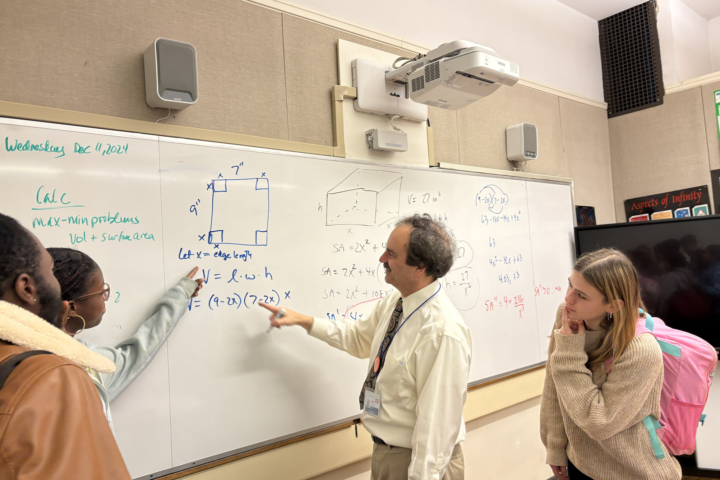Globally, we consume about 350 tons of meat each year. Americans alone consume 26 billion pounds of beef annually. Due to the high demand for meat products, industrialized agriculture has been a cornerstone of society. Now, we are seeing its downsides. It has contributed to the climate crisis, with livestock worldwide accounting for about 15% of greenhouse gas emissions. One cow requires up to 11,000 gallons of water each year. Furthermore, studies have linked red meat to cancer, cardiovascular disease, diabetes and obesity. The use of antibiotics in animal agriculture has contributed to the spread of antibiotic resistance. The agricultural industry also utilizes unethical practices towards animals, which have pushed some consumers to become vegetarian or vegan. Although plant-based proteins have gained popularity over the years, nothing has been able to replace real meat – until now.
Lab-grown meat is a promising alternative that does not require slaughtering animals to produce genetically real meat. It is synthesized through the cultivation of animal cells in vitro in a controlled environment, free from bacteria and diseases. In 2002, the first edible lab-grown meat – a fish filet made from goldfish – was produced. Since then, numerous start-ups have worked to create lab-grown meat products, and although they are not yet commercially available, they should be marketable within the next few years.
Analysts project that the plant-based and lab-grown meat markets could be worth up to $85 billion by 2030. According to Matt Simon from Wired Magazine, the promise of lab-grown meat is not to stop eating animals, but to eat much less of them. If lab-grown meat fulfills this promise, it could have major effects on the environment, the agricultural industry, and society as a whole, making it a technology that will be instrumental in our future.
Although the precise methods by which cultured meat is produced varies between labs, they are generally similar. Lab-grown meat starts with animal cells (typically muscle, fat, or stem) that are cultured using an appropriate growth medium. By using the growth medium, which contains nutrients to promote growth and survival, and providing warmth, oxygen, salt, sugars, and proteins, the animal cells divide and expand into meat. The idea behind it is to trick the cells into thinking they’re still inside of their owner. Using this method, scientists can theoretically create an unlimited amount of meat from just one piece of meat. Food technology company Mosa Meat says that one tissue sample from a cow can yield enough muscle tissue to make 80,000 quarter-pounders.
There are several dozen cell-culturing companies worldwide, and the US is home to at least 9. The companies receive a lot of individual funding from people including Bill Gates and Richard Branson. Some of the more well-known companies include Meatable, Just, Finless Foods, Mosa Meat, and Future Meat Technologies. Meatable is a Dutch startup that claimed they could produce cultured meat from the stem cells of animal umbilical cords, hence never needing a dead animal in the first place. The CEO of Just, Josh Tetrick, has been testing lab-grown Foie Gras at the Just test kitchen in San Francisco where regular Foie Gras is illegal. Tetrick says that Just has made the process cost-effective enough to take to market. According to CEO of Finless Foods, Mike Selden, FF takes a bit of fish meat and looks for stem-like cells called progenitor cells “that have the ability to differentiate into different lineages.” Mosa Meat claims that their cultured meat generates up to 96% lower greenhouse gas emissions, while Future Meat Technologies claims that its products take up to 99% less land, 96% less freshwater, and emit 80% fewer greenhouse gasses. Despite their slight differences in production, all the companies share a common goal: to combat climate change.
There are many ways in which lab-grown meat could make a positive impact on the environment. The meat industry has contributed to the severity of climate change, and according to Slow Foods, “just in the second half of the 20th century, global meat consumption increased fivefold, growing from 45 million tons of meat consumed in 1950 to almost 300 million tons today. If not stopped, that number could double by 2050.” This could cause even more devastating effects, given that one-third of the world’s arable land is used to grow and feed livestock, which has led to deforestation, and that beef accounts for about 41% of animal agriculture’s greenhouse gas emissions. An Oxford study showed that similar to the start-ups’ claims, lab-grown meat could be produced with up to 96% less greenhouse gas emissions and water than conventional meat.
Producers face another key issue in having to convince consumers to stray from traditional meat. Surveys have shown that the public has a low interest in eating cultured meat, much less letting it replace regular meat. Research published by the University of Sydney and Curtin University on September 8th showed that 72% of Gen Z is not ready to accept cultured meat, although 41% believe it could be a viable nutritional source. Participants had concerns regarding taste, health, safety, and whether it is a more sustainable option than regular meat. And, although the federal government initially promoted meat alternatives, state governments have not; Missouri, for example, passed a bill in May of 2018 limiting the use of the word “meat” to an “edible portion of livestock or poultry carcass.” These are all barriers that meat labs must overcome before their products can hit the shelves.
To learn more about the implications of lab-grown meat and its possible impacts, I interviewed history teacher Lou Resnikoff, whose knowledge of food and agriculture has allowed her to make informed opinions about the topic.
Lucy Troy: Does the lab-grown meat industry put farmers and agricultural workers at risk of losing their jobs?
Ms. Resnikoff: “It causes instability to workers who are already at a disadvantage… I can describe slaughterhouse jobs as some of the worst jobs in the US economy. They’re effectively unchanged from the way that they existed since the 19th-century. So the idea that those jobs would go away gives a wrenching amount of instability for the people currently working in that industry. And on the other hand, those are already really horrible jobs.”
LT: Will lab-grown meat have a significant effect on climate change?
MR: “All tech won’t have any impact on its own… It’s society’s choice to make a difference… Lab-grown meat may maintain business as usual because it doesn’t build a culture of consumption that shifts meat from being the center of our consumption… We still don’t know what kind of carbon footprint [lab-grown meat] will have, but there’s a way of raising animals and building cuisines around meat that have less harmful consequences on the environment.”
LT: What are some examples of ways we can reduce the footprint of animal agriculture?
MR: “We need a massive recentering surrounding animal agriculture… We can build smaller farms, use less land, implement rotational grazing, use forested areas for grazing, and use silvopasture… All these practices can take CO2 out of the atmosphere.”
LT: How will the shift from our reliance on farms to labs impact our society?
MR: “It depends on what animals you’re talking about, but this would create instability for people who are already in marginal positions [in agriculture].”
LT: Should the government help fund start-ups that are working to produce lab-grown meat?
MR: “I feel like that money is better spent elsewhere and I also feel like the extent to which those startups are going to be super profitable is going to be hard to access and reproduce… it’s going to take an incredible amount of capital and grant to build and develop these technologies… I don’t feel like it’s concentrating power in a way that replicates the inequalities that already exist in animal agriculture instead of disrupting that inequality in a concentration of power.”
MR: “There’s a lot of support for industrial agriculture… If we thought about how to grow meat sustainable and justly, there would be a lot more jobs.”
The future of lab-grown meat holds hope, fear, and anticipation, and we must embrace these feelings as we begin to encounter cultured meat in our grocery stores and homes. Lab-grown meat could transform the way we eat food and could spearhead other green innovations in agriculture and cuisine. It has already shown promise in being able to ameliorate the effects of climate change and could be a more sustainable option than traditional meat. On the other hand, it is hard to assess the future of cultured meat without having data regarding its large-scale production. As Ms. Resnikoff alluded to, it might be more worthwhile to put our efforts and trust into sustainable agriculture, given our ongoing reliance on it. Furthermore, cultured meat producers must overcome an abundance of challenges before their products will be ready for consumption. Still, meat labs are racing to make their green meat the first to make it into consumers’ mouths, and there is no telling what will happen when society is met with this culinary revolution.





